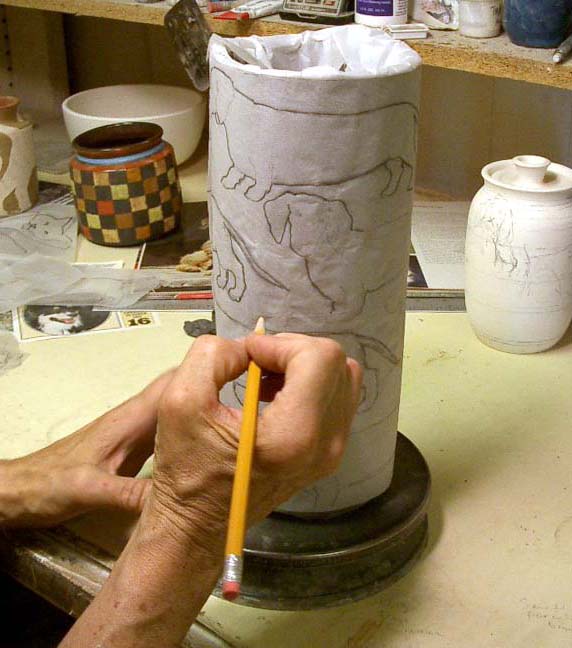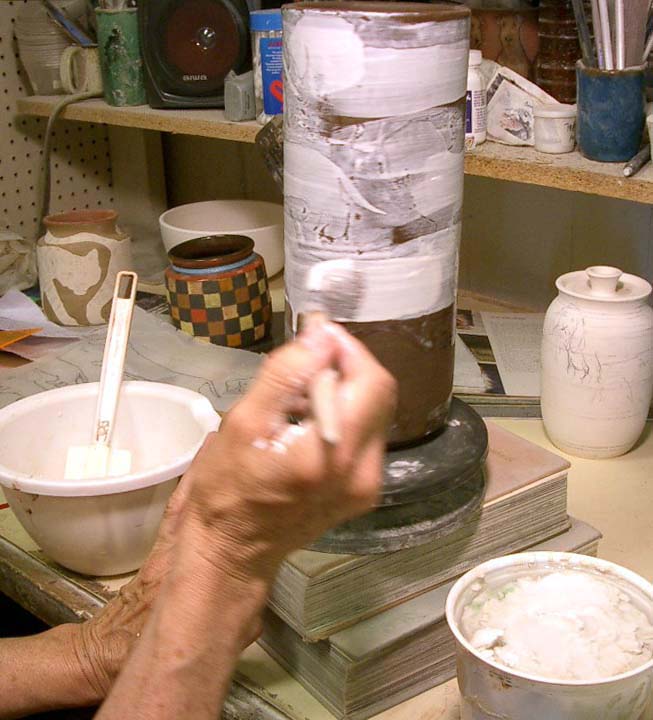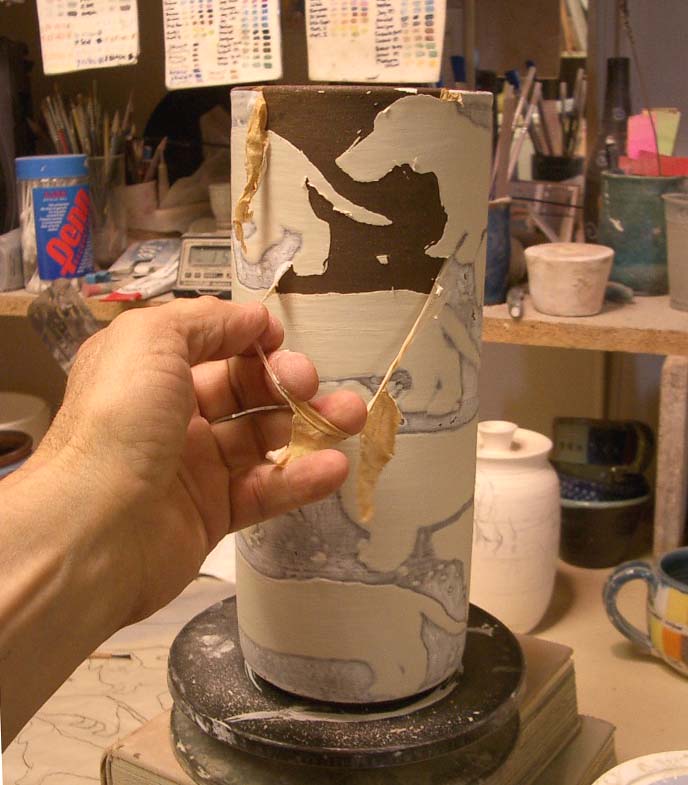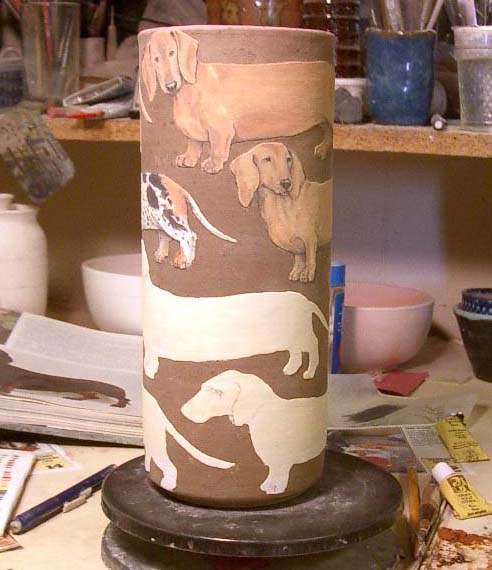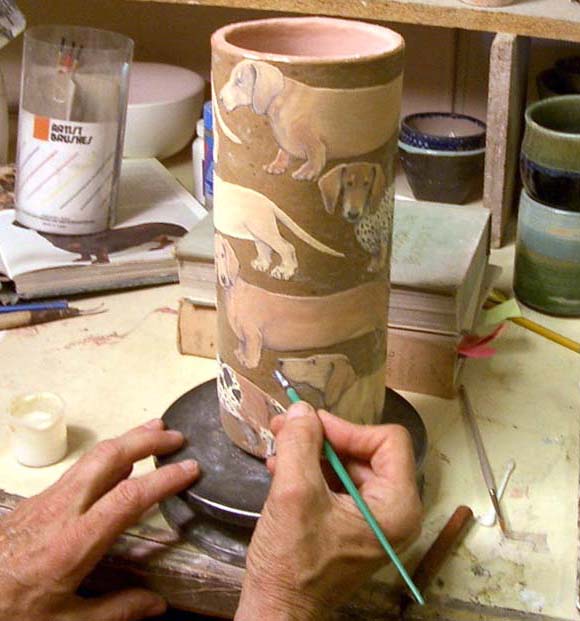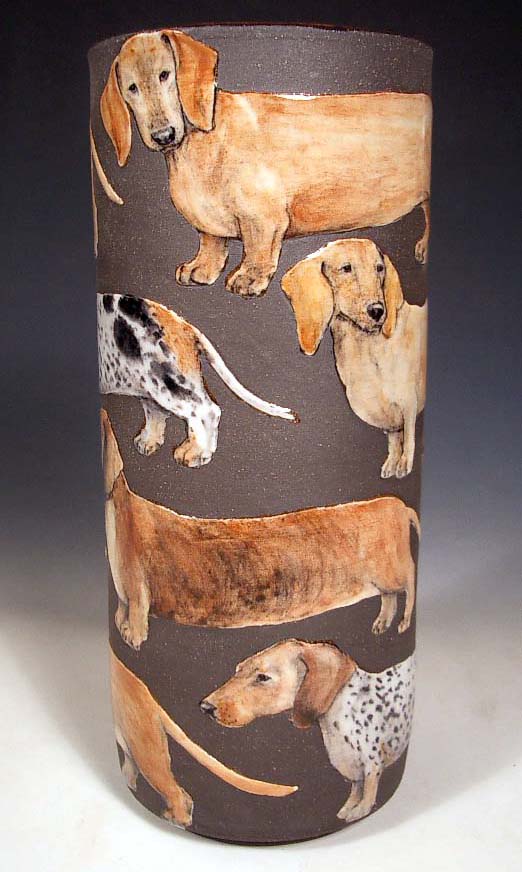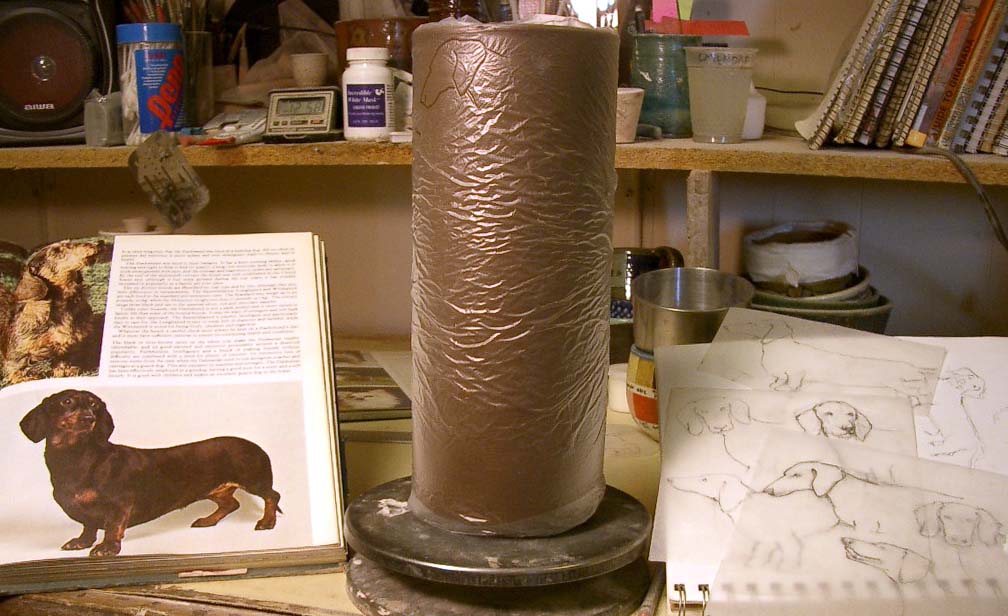
It is important to apply the porcelain slip (a liquid form of clay) when the pot is as damp as possible. There is stress between the slip and the leather-hard clay. If the clay gets too dry before the slip is applied, the slip will crack or peel off. Also, clays can have different shrinkage rates which can cause tension leading to cracks, even the pot splitting in pieces after the final firing. This black clay is a fussy clay so using this technique with it is always a risk. I wrapped the pot in dry-cleaner plastic to keep it as damp as possible while I worked out the design. |
